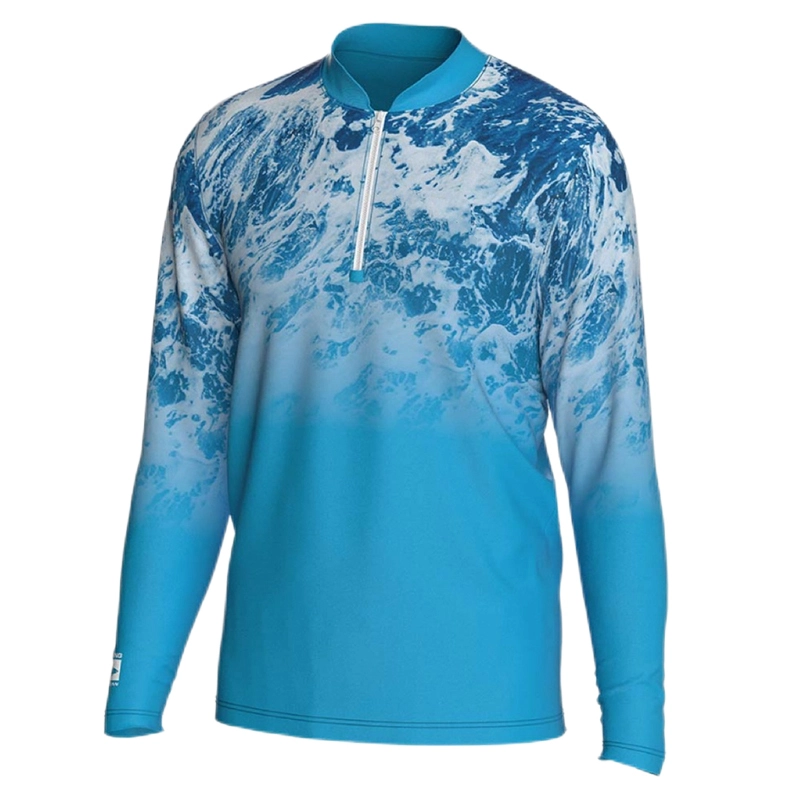As we become increasingly aware of the dangers of ultraviolet (UV) radiation, the demand for UV protective fabrics has grown exponentially. These specialized fabrics are designed to block or absorb UV radiation, preventing it from penetrating the skin and causing damage. With so many types of UV protective fabrics available, it can be overwhelming to navigate the market. In this comprehensive guide, we’ll explore the different types of UV protective fabrics, their characteristics, and their applications.
Natural Fibers: Cotton, Linen, and Bamboo
Natural fibers, such as cotton, linen, and bamboo, are popular choices for UV protective clothing. These fibers have inherent UV-blocking properties, making them an excellent starting point for UV protection. Cotton, for example, has a natural UPF rating of around 5-7, while linen and bamboo have a UPF rating of around 10-15. However, it’s essential to note that natural fibers can lose their UV-blocking properties when stretched, wet, or worn out. To enhance their UV protection, natural fibers are often blended with Sun Protection Clothing Manufacturers or treated with UV-blocking chemicals.

Synthetic Fibers: Polyester, Nylon, and Spandex
Synthetic fibers, such as polyester, nylon, and spandex, are widely used in UV protective clothing. These fibers can be engineered to have high UPF ratings, often exceeding 50+. Polyester, for example, is a popular choice for outdoor clothing due to its high UPF rating and durability. Nylon and spandex are also commonly used in activewear, providing a comfortable and flexible fit while maintaining UV protection. Synthetic fibers can be woven tightly to prevent UV radiation from passing through, making them an excellent choice for high-risk activities like surfing or hiking.
Treated Fabrics: Chemical Treatments and Finishes
Treated fabrics are natural or synthetic fibers that have been treated with UV-blocking chemicals or finishes. These treatments can significantly enhance the fabric’s UPF rating, making them an attractive option for UV protective clothing. Chemical treatments, such as those containing zinc oxide or titanium dioxide, can be applied to the fabric during the manufacturing process. Finishes, like Scotchgard or Teflon, can also be applied to the fabric to repel UV radiation. Treated fabrics are often used in outdoor clothing, such as hiking shirts and pants, to provide long-lasting UV protection.
Moisture-Wicking Fabrics: Polyester Blends and Merino Wool
Moisture-wicking fabrics are designed to keep the skin dry and cool while providing UV protection. Polyester blends, such as polyester-cotton or polyester-nylon, are popular choices for moisture-wicking fabrics. These blends can be engineered to have high UPF ratings while maintaining breathability and moisture-wicking properties. Merino wool is another excellent choice for moisture-wicking fabrics, providing natural temperature regulation and UV protection. Moisture-wicking fabrics are ideal for activewear, such as running shirts and leggings, where comfort and performance are paramount.

Specialized Fabrics: UPF 50+ and Cooling Fabrics
Specialized fabrics, such as UPF 50+ and cooling fabrics, offer advanced UV protection and comfort features. UPF 50+ fabrics, like those made from polyester or nylon, provide the highest level of UV protection, blocking 99% of UV radiation. Cooling fabrics, such as those treated with phase-change materials or evaporative cooling technology, can help regulate body temperature while providing UV protection. These specialized fabrics are often used in high-performance outdoor clothing, such as cycling jerseys and triathlon suits.
Conclusion
In conclusion, the world of UV protective fabrics is vast and diverse, offering a range of options for different applications and activities. By understanding the characteristics and benefits of each type of fabric, consumers can make informed choices when selecting UV protective clothing. Whether you’re looking for natural fibers, synthetic fibers, treated fabrics, moisture-wicking fabrics, or specialized fabrics, there’s a UV protective fabric out there to suit your needs. Remember, UV protection is essential for preventing skin damage and skin cancer, so choose your fabrics wisely and enjoy the outdoors with confidence.